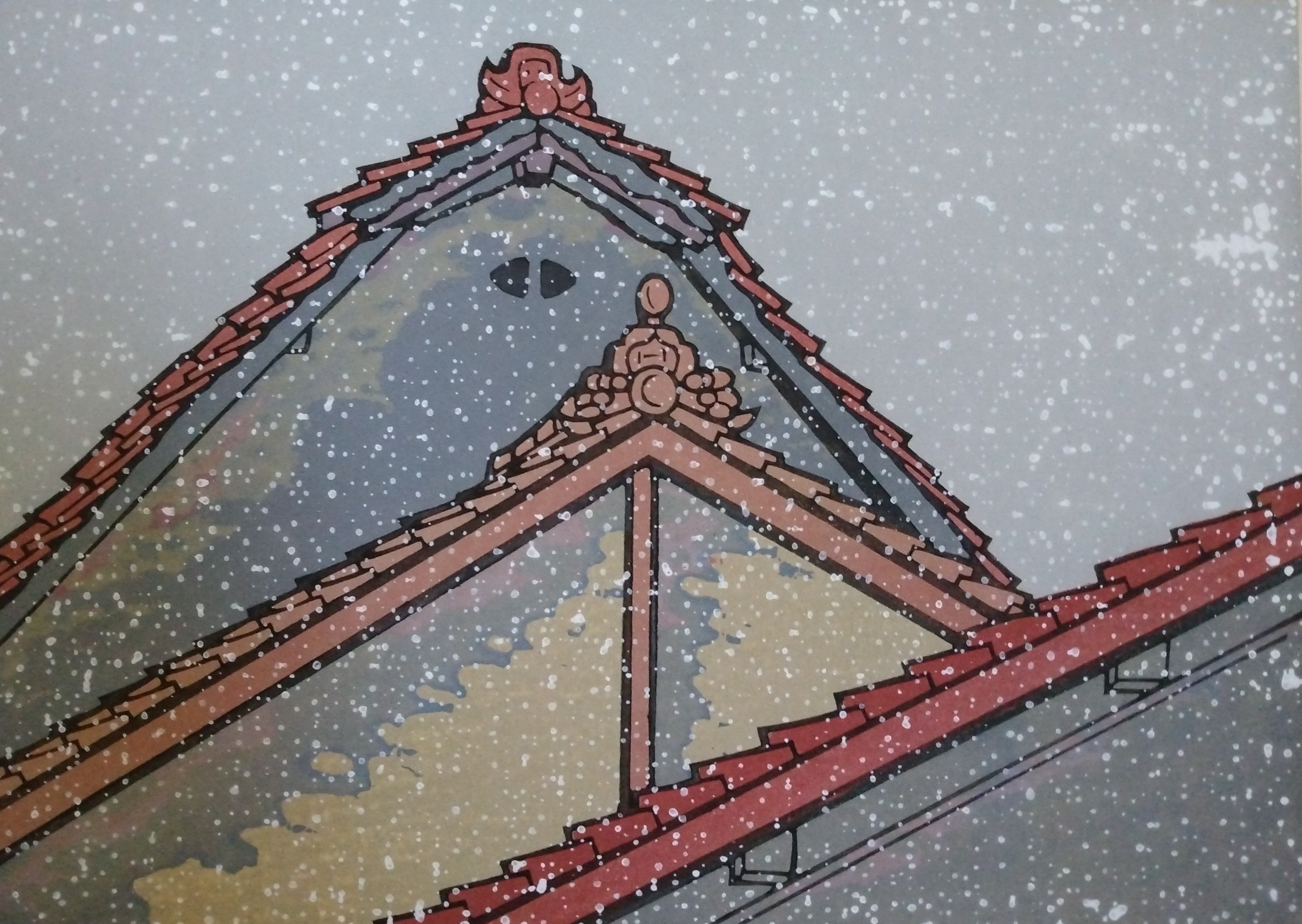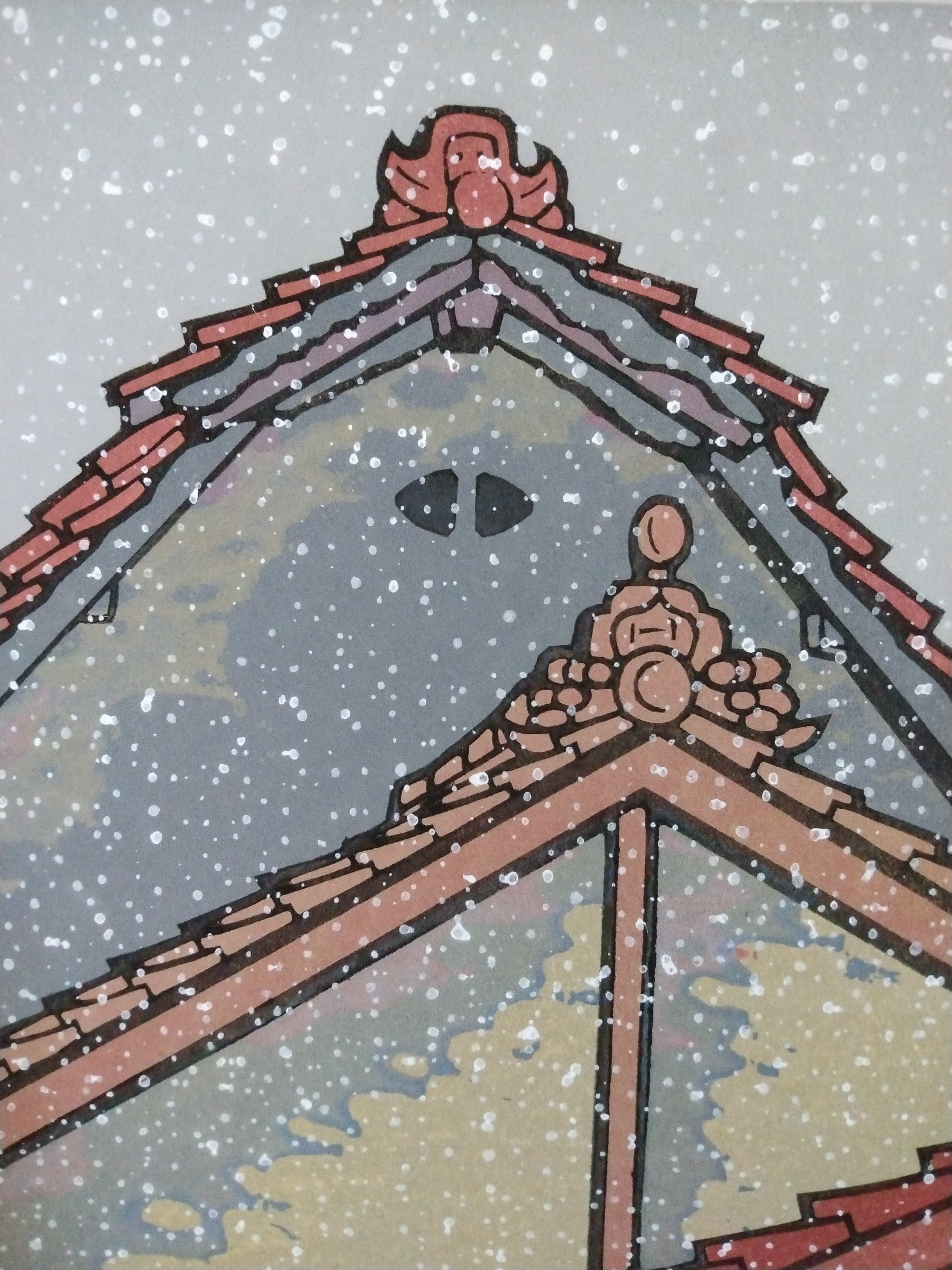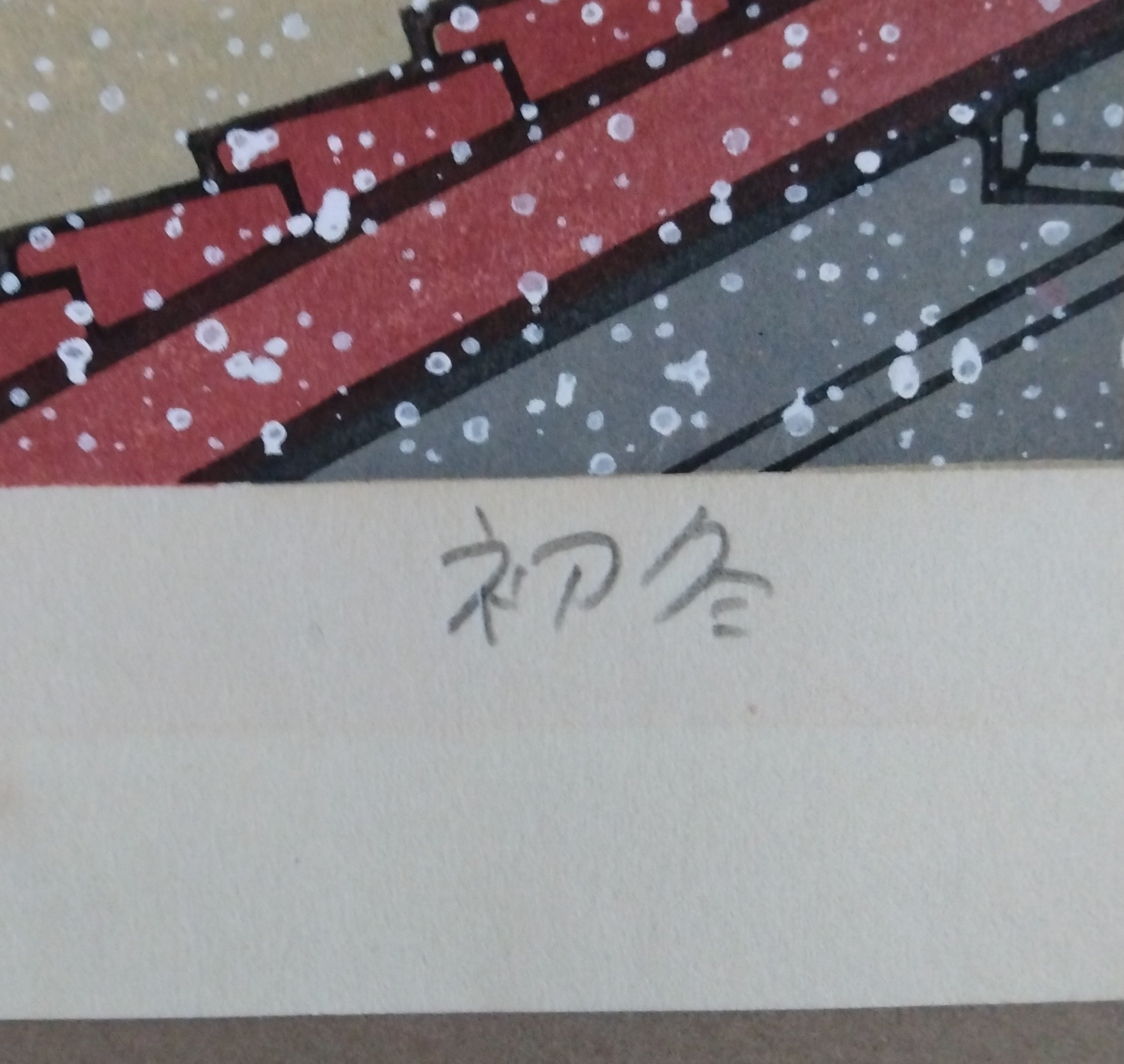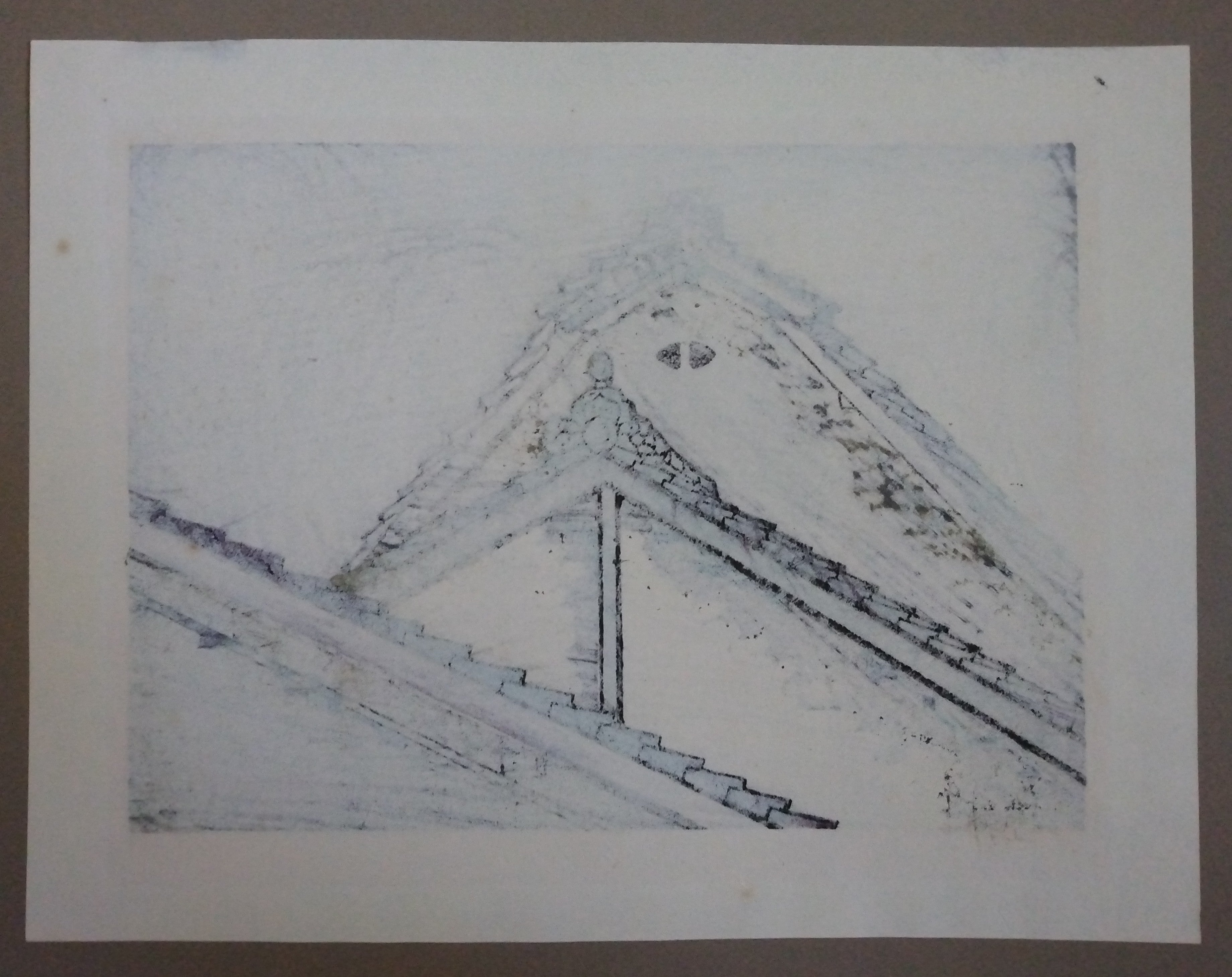Description
Woodblock Print by Katsuyuki Nishijima, "First Snow" (Hatsu Yuki). Artist signed print. Ca. 1980's. Horizontal format; H. 7.5"(19cm) X W. 10.5"(26.75cm). Excellent condition. *Fully matted, framed, & delivered option may be available for local purchasers (I-5 corridor from Seattle to Blaine, WA). Please contact for details.
The image of three roof lines under falling snow features buildings with white plaster walls with red and ochre roof tiles. This contrasts with the wooden buildings covered with gray or dark blue roof tiles so often seen in Nishijima's images of Kyoto or Takayama. Red roof tiles, sekishu-gawara, are made with iron-rich clay and found in a limited number of locations in Japan. The most famous of these might be Iwami, in Shimane Prefecture; AizuWakamatsu in Fukushima Prefecture; and Fukiya Village in Takahashi City, Okayama Prefecture. My guess is that this is Fukiya in Okayama, due to the two tones of red pictured. Fukiya is a designated historic preservation site due to all of these old buildings. Fukiya flourished as a copper mining town in the mid Edo Preiod until the Meiji Era. It was also famous as a producer of Bengara, a red pigment made from oxidized iron. Not only does the town feature the sekishu red tile roofs, the town is painted in shades of red and ochre highlighting the importance of Bengara production in its history.
Katsuyuki Nishijima, 1945 – present.
Katsuyuki Nishijima was born in Yamaguchi Prefecture at the southwest end of the main island of Honshu. At the age of 19, he started studying the art of woodblock printing making at the Mikumo Publishing Company in Kyoto. By the early 1970’s, he was beginning his career as a Sosaku Hanga (Creative Print) artist. As opposed to traditional woodblock prints of the 19th Century and earlier that were created by a team of artisans composed of designers, carvers, colorists, printers, and publishers; the Sosaku Hanga movement of the 20th Century highlighted the work of artists who self-drew, self-carved, and self-printed their own expressive works. Nishijima is a very popular contemporary Kyoto print artist and his works have been collected and exhibited widely in Japan, the US, and Europe.
Nishijima’s works could be called “romantic” in that there is something idealized and old-fashioned about his images. They rarely contain people; or modern elements such as cars, telephone wires, or even the ubiquitous Japanese trains. They focus on architectural elements such as tiled and thatched rooftops, verandas, noren shop curtains, the wooden latticework in front of Kyoto machiya buildings, stone walls, as well as Japanese rural landscapes. While these could be considered romantic and detached from reality, these elements still exist in modern-day Japan and are what visitors are drawn to and remember in places like Kyoto, Shigaraki, Takayama, and the like. One could say that instead of romanticizing Japanese scenery, he’s actually bringing out the essence of what is beautiful and important in humanity’s view of traditional Japan.






